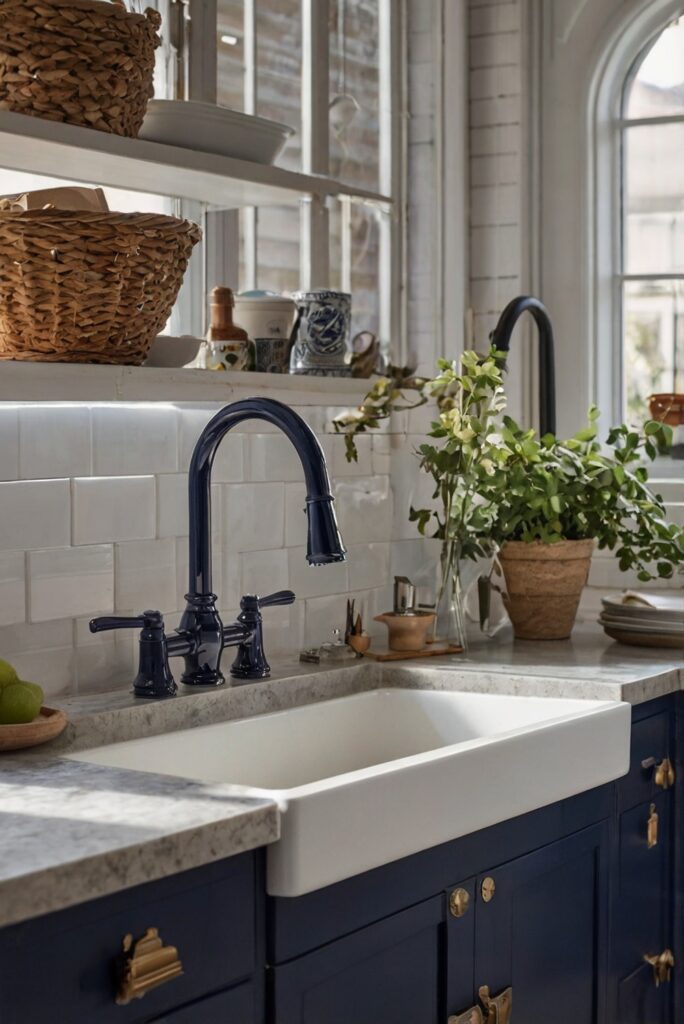Looking to upgrade your kitchen sink? Learn how to select the perfect shape to enhance both functionality and style in your space with this insightful interior designer routine.
**How to Choose the Right Shape for Your Kitchen Sink?**
**Answer:**
When choosing the right shape for your kitchen sink, consider the functionality it will provide. If you prioritize space planning and interior design, opt for a sink that complements your kitchen layout and enhances the overall aesthetics. Selecting a kitchen sink that aligns with your home decor interior design ensures a cohesive look. Make sure the sink can accommodate your daily routine and activities in the kitchen, such as washing dishes or food preparation. Take into account the size of the sink, material quality, and durability for long-term use. Proper interior bedroom design should also be considered to create a harmonious flow in the living space. Additionally, ensuring color matching painting in the kitchen can add a touch of elegance. Choose a sink shape that fits your designer wall paint and primer paint for walls to complete the look.
By following a thoughtful process, you can achieve a visually appealing and functional kitchen design that enhances your home interior.
When choosing the right shape for your kitchen sink, it is essential to consider the following factors:
1. Kitchen Layout:
**The layout of your kitchen plays a crucial role in determining the shape of your sink.** For smaller kitchens, a single bowl sink may be more practical as it provides more counter space. In contrast, larger kitchens can accommodate double bowl sinks or farmhouse sinks.
2. Usage:
**Consider how you will use your sink on a daily basis.** If you do a lot of cooking and washing large pots and pans, a deep, wide sink may be more suitable. For those who mainly use the sink for washing dishes, a single bowl or double bowl sink may be sufficient.
3. Style and Design:
**Choose a sink shape that complements the style and design of your kitchen.** A farmhouse sink works well in a traditional or rustic kitchen, while a sleek and modern kitchen may benefit from a stainless steel undermount sink.
4. Size of the Kitchen:
**The size of your kitchen will also influence the shape of your sink.** In a small kitchen, a compact sink that maximizes counter space is ideal. Larger kitchens can accommodate larger sinks or even double bowl sinks for added functionality.
5. Budget:
**Consider your budget when choosing a sink shape.** Some sink shapes, such as farmhouse sinks, can be more expensive due to their size and design. Stainless steel sinks are a more budget-friendly option and offer durability and easy maintenance.
When selecting the right shape for your kitchen sink, it is important to weigh these factors carefully to ensure you choose a sink that not only meets your functional needs but also enhances the overall look and feel of your kitchen. Remember to consider the layout, usage, style, size of the kitchen, and budget to make an informed decision.
Consider Your Kitchen Layout:
When choosing the right shape for your kitchen sink, it’s crucial to consider your kitchen layout. The shape of your sink should complement the overall design of your kitchen. For example, if you have a small kitchen with limited counter space, a single-bowl sink may be more practical. On the other hand, if you have a large kitchen with ample counter space, a double-bowl sink may be more convenient.
Think About Your Cooking and Cleaning Habits:
Your cooking and cleaning habits play a significant role in determining the right shape for your kitchen sink. If you do a lot of cooking and use large pots and pans, a deep, wide sink may be more suitable. If you prefer to hand wash dishes, a sink with a single bowl may be easier to work with.
Consider the Material:
The material of your sink can also influence the shape you choose. Stainless steel sinks are durable and easy to clean, making them a popular choice for many kitchens. Granite composite sinks offer a more modern look and are resistant to scratches and stains. Cast iron sinks are also durable but require more maintenance to prevent chipping and rusting.
Think About Your Budget:
When choosing the right shape for your kitchen sink, it’s essential to consider your budget. The cost of sinks can vary significantly depending on the material, size, and brand. Stainless steel sinks are typically more affordable, while granite composite and cast iron sinks tend to be more expensive. Determine your budget beforehand to narrow down your options.
Consult with a Professional:
If you’re unsure about the right shape for your kitchen sink, consider consulting with a professional. A kitchen designer or plumber can provide valuable insights based on your kitchen layout, cooking habits, and budget. They can help you explore different shapes and materials to find the perfect sink that meets your needs and complements your kitchen design.

